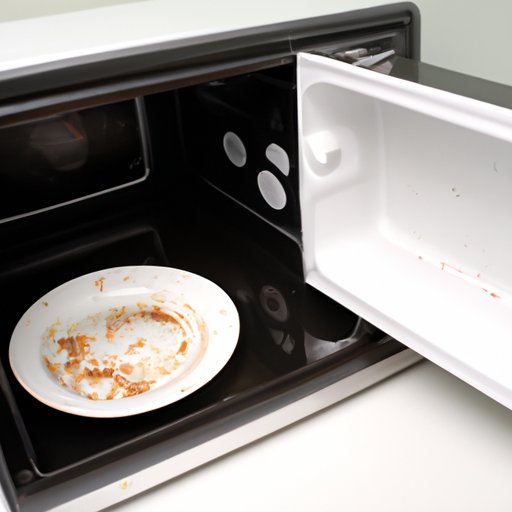
What Equipment Should You Use to Reheat Food?
Reheating leftovers can be a challenge. You want to make sure your food is safe to eat, but you also want it to taste just as good as it did the first time around. With so many different methods and cookware options available, it can be hard to know where to start. In this article, we’ll explore the pros and cons of different reheating methods, find out what cookware chefs recommend, and learn the dos and don’ts of reheating for safe and tasty leftovers.
Microwave vs. Oven: The Pros and Cons of Reheating Your Food
Microwaves and ovens are two of the most popular methods for reheating food. Microwaves are convenient and quick, but they can also be uneven and result in texture loss. Ovens take longer, but they provide more even heating and are better for crispy foods. Consider the pros and cons of each option when deciding which one to use for your leftovers.
Pros of microwaves:
- Speed: Microwaves are the fastest way to reheat food.
- Convenience: Most homes have a microwave and it’s easy to use.
- Energy efficiency: Microwaves use less energy than ovens.
Cons of microwaves:
- Uneven heating: Microwaves can leave hot spots in your food.
- Potential texture loss: Microwaving can make your food mushy or rubbery.
- Limited food compatibility: Not all foods can be microwaved, such as those with a crispy or crunchy texture.
Pros of ovens:
- More even heating: Ovens heat food evenly, which helps maintain its original texture.
- Better for crispy foods: Ovens are better suited for foods that need to maintain their crispy texture such as pizza or French fries.
- Versatile for different dishes: Ovens can be used for a variety of dishes, not just for reheating.
Cons of ovens:
- Slower: Ovens take longer to preheat and reheat food.
- Requires preheating: You need to preheat your oven before reheating your food.
- Less energy-efficient: Ovens use more energy than microwaves.
The Best Cookware for Reheating Food, According to Chefs
Choosing the right cookware is important for safe and effective reheating. Chefs recommend using materials such as cast iron, stainless steel, and Pyrex glass for optimal results.
Cast iron is great for reheating foods such as stews or chili because it heats evenly and retains heat well. Stainless steel is ideal for foods with acidic ingredients since it won’t react to acidic foods. Pyrex glass is great for reheating in the microwave since it’s microwave-safe and has a tight-fitting lid to prevent splatters.
Top 5 Reheating Methods You Need to Try Today
Looking to switch up your reheating routine? Here are five alternative methods to try:
Method 1: Stovetop simmering/sautéing
Simmering or sautéing on the stovetop is a great way to heat up soups, stews, and other liquid-based dishes. Simply heat up your dish in a pot with a little bit of oil or butter and stir occasionally until it’s heated through.
Method 2: Toaster oven toasting/roasting
If you have a toaster oven, you can use it to reheat small amounts of food like pizza or bread. Place your food on a baking sheet and heat it up using the toaster oven’s toasting or roasting function.
Method 3: Steaming (using steamer rack or microwave steam bag)
Steaming is a great option for reheating vegetables and seafood. Use a steamer basket or microwave steaming bag and add a little bit of water to the bottom. Add your food and heat in the microwave or on the stovetop until heated through.
Method 4: Sous vide cooking
If you have a sous vide machine, you can use it to reheat food to the exact temperature you want. Simply vacuum seal your food and place it in the sous vide machine at your desired temperature until it’s heated through.
Method 5: Grilling/reheating outdoors
If you’re grilling outside, you can use the grill to reheat food like meats or vegetables. Simply place your food on the grill and cook until it’s heated through.
The Dos and Don’ts of Reheating Leftovers
When reheating leftovers, it’s important to avoid common mistakes that can make your food unsafe or unappetizing.
Do:
- Portion your food correctly: Reheat only the portions you plan to eat.
- Add moisture if needed: Add a bit of broth or water to dishes that have become dry when reheated.
- Use a thermometer to check the internal temperature: Make sure your food reaches a safe temperature of 165°F (74°C).
Don’t:
- Reheat seafood more than once: Seafood has a higher risk of bacterial growth, so it should only be reheated once.
- Mix fresh and reheated food: Mixing fresh and reheated food can result in uneven heating and potential bacteria growth.
- Let food sit at room temperature for too long: Bacteria can grow rapidly between the temperatures of 40°F (4°C) and 140°F (60°C), so make sure to refrigerate your leftovers promptly.
A Comprehensive Guide to Reheating Food Safely and Deliciously
To reheat your leftovers safely and deliciously, consider the pros and cons of microwaves and ovens, choose the best cookware for your dish, and experiment with creative reheating methods. Keep in mind the dos and don’ts of reheating and always use a thermometer to check the internal temperature of your food for safe eating. With these tips in mind, you can enjoy your leftovers without sacrificing taste or safety.
To further enhance your leftovers, try marinating your food before reheating or adding fresh herbs for extra flavor. Share your reheating hacks and tips to inspire others to enjoy their leftovers creatively and safely.
Conclusion
Reheating leftovers may seem like a typical chore, but it can lead to unsafe and tasteless food if mishandled. By choosing the right equipment and following proper safety tips, you can ensure that your leftovers are safe and delicious. Don’t be afraid to experiment with new techniques and cookware to elevate your reheating game.




